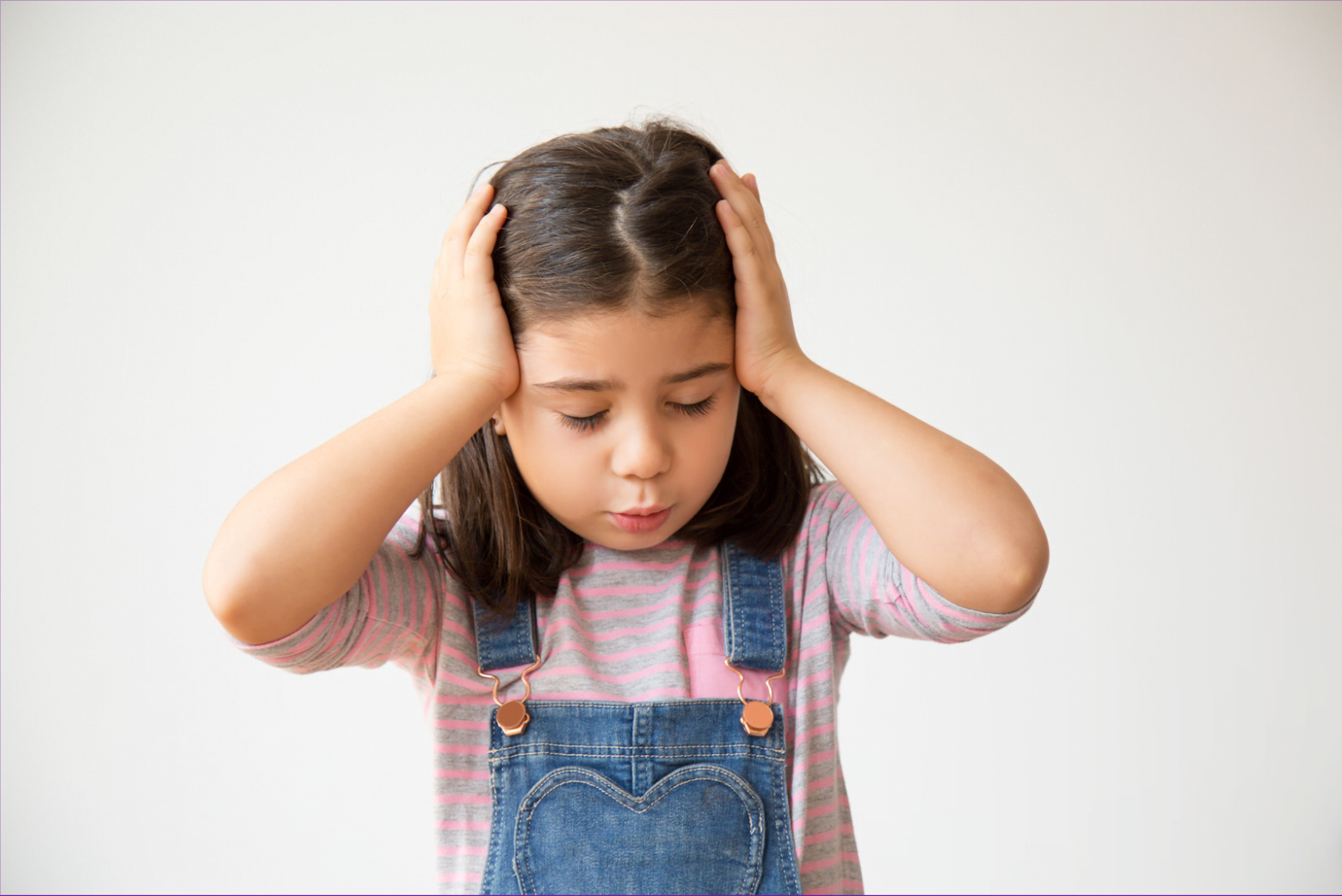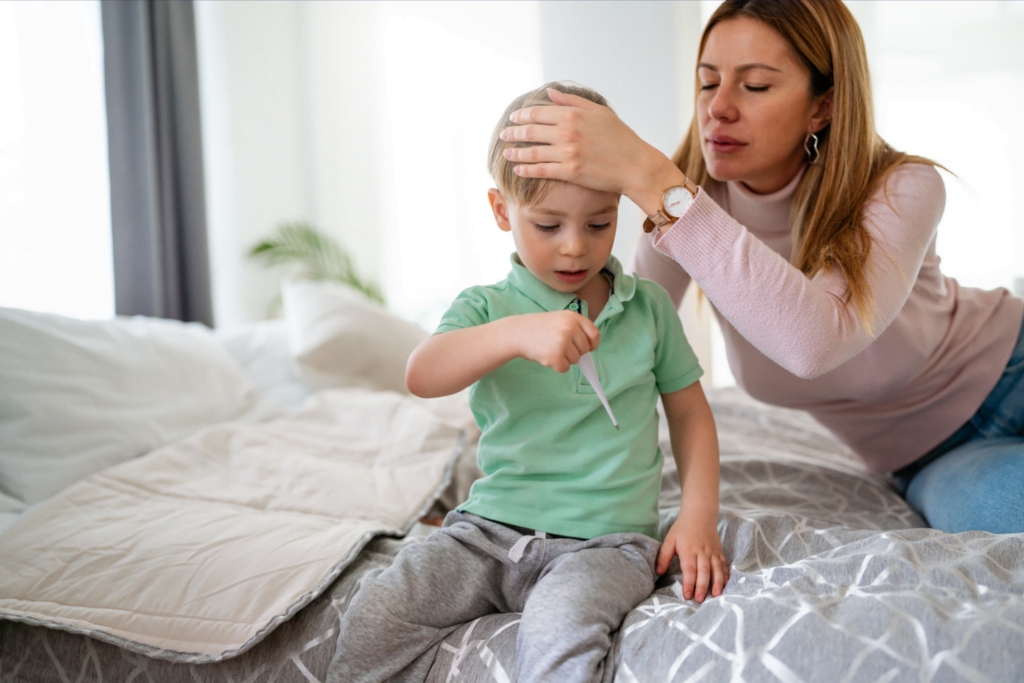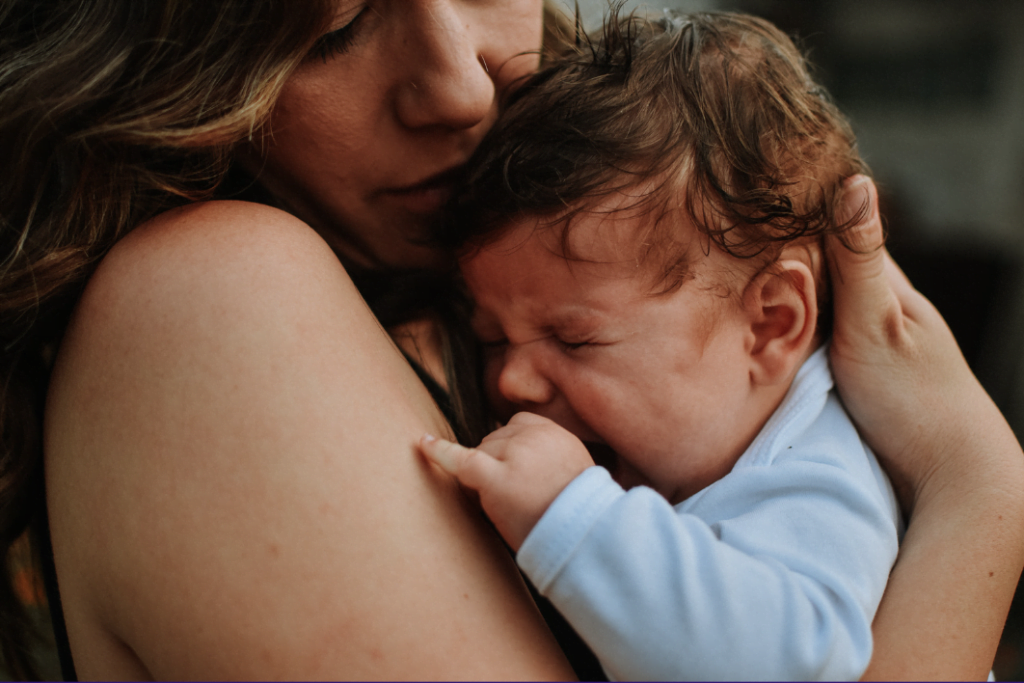Early Stage Meningitis Symptoms: What to Look For and When to Worry

Meningitis is an infection that causes inflammation in the fluid and layers (membranes) surrounding the brain and spinal cord. These protective membranes are known as meninges.
Bacterial meningitis, in particular, is a potentially serious infections that can make babies and children very unwell, so it's important to be aware of the early signs and symptoms.
It can be hard to tell whether your child has early signs of bacterial meningitis, or if it’s just another cold or flu. If your little one is unwell and you’re not sure if it could be meningitis it's important to seek urgent medical help straight away.
In this article we will discuss the signs and symptoms that can happen in the early stages of a meningitis infection. We'll talk about the common signs in different ages and what to do if you suspect your baby or child has meningitis.
How do you get meningitis?

Meningitis is an infection that can be caused by viruses, bacteria, or fungi. The infection spread by close contact with someone who is infected or a carrier, or by being exposed to the virus, bacteria or fungus in the environment.
Bacterial meningitis, for example, can be spread when a person is infected with the bacteria coughs or sneezes close by. This is because the bacteria can live and grow in the nose and throat of people who do not have symptoms Certain bacteria, like Neisseria meningitidis and pneumococcal bacteria, are known to cause this type of meningitis.
Viral meningitis, on the other hand, is usually caused by viruses that can be found in things like spit or poop. Some viruses that can cause meningitis are enteroviruses, herpes simplex virus, and the mumps virus.
Fungal meningitis is rare, and usually affects people with weak immune systems, such as in people with cancer or on certain strong medications, who are at increased risk. The fungus can be caught by breathing in fungal spores that circulate in the air.
How does a child get meningitis?

Meningitis can affect babies, children and adults. Babies and children can be particularly vulnerable to developing meningitis though, because their immune systems are still developing.
The viruses and bacteria that cause meningitis can be found in the environment, such as in the air we breathe or on objects we touch. When a child comes into contact with these germs, they can enter their body through their nose or mouth.
Common ways for germs to spread are through coughing, sneezing, kissing or sharing eating utensils or drinks. Once the germs are inside the body, they travel to the protective membranes around the brain and spinal cord, causing inflammation and leading to meningitis.
It's important to remember that not all children who are exposed to these germs will develop meningitis, but taking preventive measures like regularly washing hand, surfaces and toys can help reduce the risk.
What are the early symptoms of meningitis?

The early signs and symptoms of meningitis can vary, and not all the signs will appear at once. If your child has a bacterial infection they will look and feel very poorly - they will not be happy or running around, even after medicine like paracetamol or ibuprofen.
Common symptoms early in the infection can include:
Fever
Severe headache
Vomiting
Stiff neck
Sensitivity of dislike of bright lights
Rash that does not disappear (see Glass Test below)
The order in which these symptoms show can differ from child to child. Some of the first symptoms (like fever and rash) can be hard to differentiate from other common conditions like flu. They symptoms of severe headache and neck stiffness are more specific for meningitis. They may not all happen at once, and it can be hard to differentiate meningitis from other more common infections like flu. If you are unsure if the signs you baby or child have could be meningitis you seek medical advice from a medical professional.
What is the Glass test (Tumbler test) for Meningitis?
The Glass test, also known as the Tumbler test, is a simple test you, as a parent or carer, can do to check whether a rash may be caused by the bacteria that can cause meningitis and septicaemia.
To do the test press a clear glass on a flat part of the skin where a rash is seen. The stomach, chest or lower back, is best. If the rash does not fade when the glass is pressed against the skin, it suggest that infection is serious and may cause meningitis.
This rash is called 'non-blanching' - it is a significant symptom that warrants immediate medical attention. It is important to note that this test is not a definitive diagnostic tool for meningitis but serves as an initial indication of a potential problem, requiring further evaluation by a healthcare professional.
Other types of marks that will also not fade under a glass are scratches and bruises as well as birth marks.
What are other signs of meningitis symptoms in kids?

In addition to the early signs of meningitis mentioned above, there are other signs and symptoms that can develop as meningitis progresses. Although these are ‘later’ signs they can develop suddenly, over a matter of hours, and are a sign that the condition is progressing.
Some later symptoms of meningitis that you may see in your baby or child include:
Drowsiness or difficulty waking up
Confusion and irritability
Extremely cold hands and feet
Pale, blotchy skin
Convulsions or seizures
What are the signs of meningitis in a newborn baby?

It can be particularly hard to diagnose meningitis in young babies as the symptoms can be hard to differentiate from other illnesses. You may see the following symptoms if your baby has meningitis:
High fever (high temperature)
Reduced or poor feeding
Constant and high pitched crying
Extreme sleepiness or irritability
Repeated vomiting
Bulging soft spot on the baby's head
Stiffness in the body and neck
Infants with meningitis may be difficult to comfort and may cry even more when held. If you are unsure if your baby has signs of meningitis get urgent medical advice.
How common is meningitis?

Meningitis is a serious condition, but thankfully it’s a relatively rare disease, and much less common than other infections like flu, pneumonia or diarrhoea and vomiting.
In the United States and Europe, the most cases are due to infection caused by viral infections, which generally cause milder illnesses. There are an estimated 1.2 million cases of viral meningitis globally each year. Viral meningitis can resolve without antibiotics within a few weeks, but other forms of meningitis need urgent treatment with antibiotics, usually through a drip.
Bacterial meningitis is the next most common form of meningitis in developed countries. In the UK, there are around 3000 cases of bacterial meningitis reported each year. Vaccination programs against the most serious forms of bacterial meningitis have reduced the numbers of cases significantly.
Meningitis caused by fungi are rare in the Western world and happen in people with suppressed immune systems. Fungal meningitis can happen in newborn babies born prematurely.
When to get medical help if you think there are early signs of meningitis?

If you or someone in your family has signs and symptoms of meningitis, like fever, headache or stiff neck, it is very important to seek medical advice. In the UK you can do this by calling 111 from any phone.
Not everyone with meningitis will experience all of these symptoms, and the severity and combination of symptoms can vary from person to person.
In some cases, bacterial meningitis can progress rapidly and lead to life-threatening complications. Therefore, early diagnosis and treatment are essential in managing meningitis and reducing the risk of complications.
How is meningitis diagnosed?
When meningitis is suspected, a healthcare professional will need to do a thorough medical examination and may recommend certain diagnostic tests. These tests may include a lumbar puncture, blood tests and brain scan.
Lumbar puncture (spinal tap) for meningitis
This procedure involves collecting a sample of cerebrospinal fluid (CSF) by inserting a needle into the spinal canal. The CSF sample is then analyzed for signs of infection, such as the presence of bacteria or elevated white blood cell count.
Blood tests for meningitis
Blood samples may be taken to check for signs of infection and inflammation. They will need to take a sample of the blood to grow the exact bug that is growing and this can take several days to show a specific results. These tests are important to know what treatment will be most effective to treat the meningitis infection.
Brain scans for meningitis
In some cases, imaging tests like a CT scan or MRI may be performed to look at the brain and surrounding structures.
What are the treatments for meningitis?
The treatment for meningitis depends on whether the cause is a viral or bacterial infection. If bacterial meningitis is suspected or confirmed, your child will need to be admitted to hospital, and antibiotics through a drip are given to fight the bacterial infection.
Viral meningitis is often managed with supportive care, such as rest, fluids, and medicines to relieve the pain and fever. It may still be necessary to be in hospital to rule out a bacteria and monitor your baby or child’s symptoms.
In addition to medical treatment, it's important to ensure the affected individual receives proper rest, hydration, and symptom management. Pain relievers may be recommended to alleviate fever, headaches, and muscle pain. It's crucial to follow the healthcare professional's instructions and complete the full course of prescribed medications to ensure effective treatment.
How can meningitis be prevented?

Preventing meningitis involves taking certain precautions to reduce the risk of infection.
Vaccination to prevent bacterial meningitis
Meningitis vaccinations offer protection against certain types of bacterial meningitis, including Haemophilus influenzae type b (Hib), pneumococcal meningitis, and the meningococcal vaccine. Keeping up to date with recommended vaccinations can significantly lower the risk of meningitis and life threatening blood poisoning.
Practice good hygiene to prevent infection
Maintaining good hygiene practices, such as regular hand washing, can help prevent the spread of germs that can cause meningitis.
Avoid close contact with people who may have meningitis
Meningitis can be contagious, especially in cases caused by bacteria or viruses. Avoid close contact with individuals who have a diagnosed or suspected case of meningitis until they are no longer contagious.
Promote a healthy immune system
A strong immune system can help protect against infections, including meningitis. Maintain a healthy lifestyle with a balanced diet, regular exercise, adequate sleep, and stress management.
Take precautions where meningitis is common
In certain situations, such as traveling to regions where meningitis is prevalent or living in closely with a large group of people (e.g., young adults in school and college students in dormitories), additional precautions may be necessary. Consult with healthcare professionals or travel health clinics for guidance in these circumstances. Wearing a face mask may reduce the risk of transmission.
Take Homes
Meningitis is usually caused by a bacterial or viral infection. Bacterial meningitis is rarer but more serious than viral meningitis. Infections that cause meningitis can be spread through close contact like sneezing, coughing, or kissing. Meningitis is usually caught from people who carry these viruses or bacteria in their nose or throat but may not be ill themselves.
Meningitis is a serious condition that requires you to act quickly. Recognising the signs and symptoms of meningitis, particularly in the early stages, is crucial for early intervention and better outcomes. If you suspect meningitis or are concerned about your symptoms or those of someone else, do not hesitate to seek immediate medical care.
We hope you found this article useful. Did you know that the Poppet community is a great place to find more helpful tips and resources for your family as well as flexible childcare from local parents and approved providers, all at the touch of a button. Register here today!
And here’s a list of other great resources to keep your family healthy and well
https://www.healthychildren.org/
https://www.nidirect.gov.uk/conditions/childhood-illnesses
https://www.sja.org.uk/get-advice/first-aid-advice/paediatric-first-aid/
https://firstaidchampions.redcross.org.uk/primary/first-aid-skills/
https://www.healthhub.sg/programmes/183/parent-hub
Disclaimer: We hope this helps your family if your little ones are unwell. Please remember this article is for education purposes and does not constitute medical advice. You should seek advice from a trained medical professional if you have concerns about your child’s health.

